Breve Note and Breve Rest
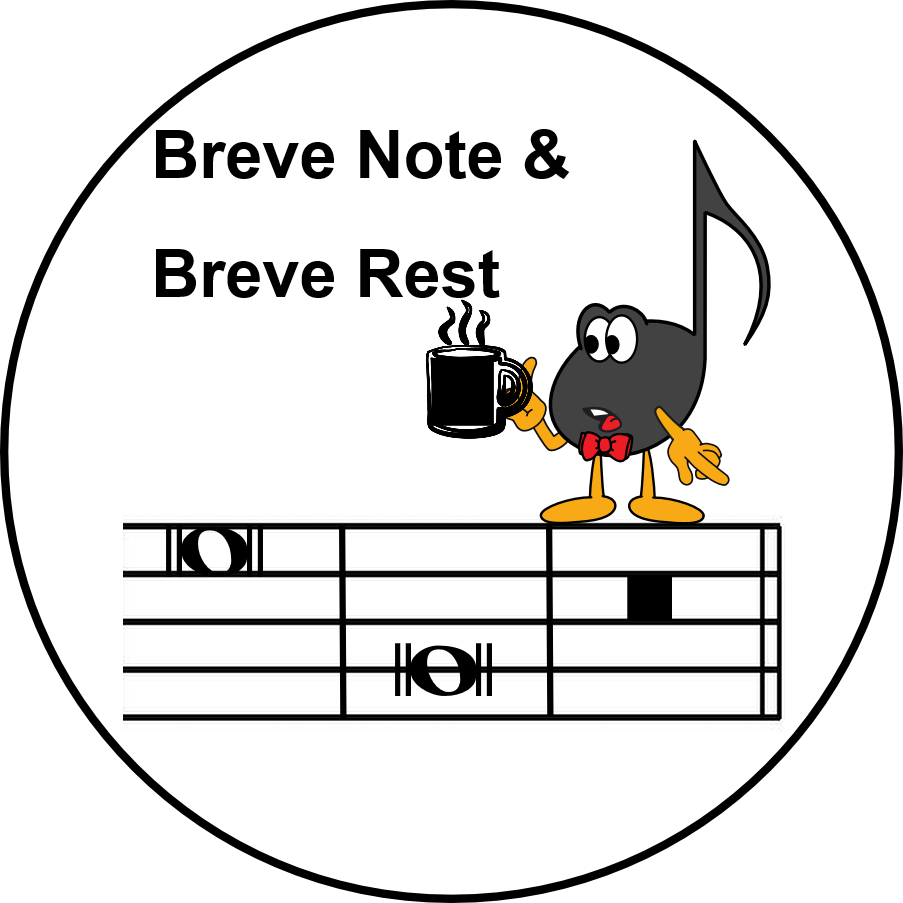
What does Breve mean? How do you write a Breve Note? How do you write a Breve Rest? When do you use a Breve Note or a Breve Rest? Let's find out!
With my special learning needs (including being dyslexic), I often have to find ways to help me remember concepts. I need to have a word or image association to the concept so that I stop second-guessing myself. (Am I correct or did I flip it/get it backwards?)
To remember the Breve Note and the Breve Rest, I think of it as a "Double Double Coffee" (2 creams, 2 sugars). A Breve Note is a "Double Whole Note". A Breve Rest is a "Double Whole Rest". This is where I get the "Double Double" image when I think of the term "Breve".
Take a look at that Breve Rest. It even looks like a Cup of Coffee! Well, in my brain it does. LOL. I should do a Blog on the different ways that my brain remembers terms and concepts... it would probably give you a giggle!
In this Blog, we are going to explore that concept of the Breve Note and the Breve Rest.
Breve Note, Breve Rest - How to Say "Breve"
Have you ever noticed that some places say the same word a "different way"? If you are in Britain and wanted to order a Potato, you would say "Po-TAH-Toe". In America, you would say "Po-TAY-Toe". It means the same thing!
In "America", the term Breve is pronounced with a soft "e" sound, rhyming with "Bev". (Say "Bev", then say it again and add the "r" sound between the B+e. Br + ev) It is considered a 1 syllable word.
In other countries, the term Breve can also be pronounced with 2 syllables (like "forte"). So, it would rhyme with "Parquet" (as in parquet flooring). Remember, for that second syllable, we do not say "EE", we say "EH". (Say "Brev-EH, not Brev-EE".)
The term is not pronounced with a one syllable hard/long "ee" sound. It does not rhyme with "Steve".
So, where you live will determine whether you pronounce Breve like it rhymes with "Bev" or with "Parquet". Either is correct.
Breve Note, Breve Rest - How to Draw a Breve Note
The Breve Note is simply a whole note with 2 vertical lines before the note and 2 vertical lines after the note.
In the Music Theory Beginner A Workbook on Page 48, students learn how to draw a whole note. They discover that what they see in their music is different from how they write the notes on the staff. (Our hands are not computers, so we do not need to use fancy fonts.) A whole note is simply a circle (or oval).
The Breve "lines" (the 2 lines before and the 2 lines after the whole note) extend approximately one-half of a staff space above and one-half of a staff space below the whole note.
The second line before the whole note will touch the beginning of the whole note. The first line after the whole note will touch the end of the whole note.
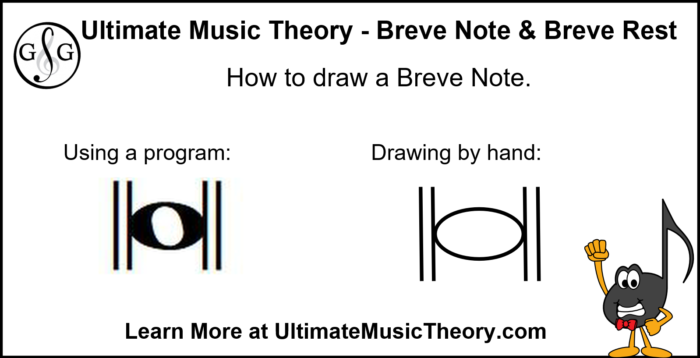
Breve Note, Breve Rest - How to Write the Breve Note on the Staff.
When writing a Breve Note on the staff, follow these 3 easy steps:
- Write the Whole Note (either on a line or in a space).
- Write the 2 Vertical Lines before the Whole Note.
- If the Whole Note is written on a line, the Vertical Lines extend from the line BELOW the note to the line ABOVE the note (and the second Vertical Line - the line closest to the Whole Note - touches the Whole Note).
- If the Whole Note is written in a space, the Vertical Lines extend from the middle of the space BELOW the note to the middle of the space ABOVE the note (and the second Vertical Line - the line closest to the Whole Note - touches the Whole Note).
- Write the 2 Vertical Lines after the Whole Note. They will match the 2 Vertical Lines before the Whole Note! (And remember, the first Vertical Line after the Whole Note will touch the end of the Whole Note.)
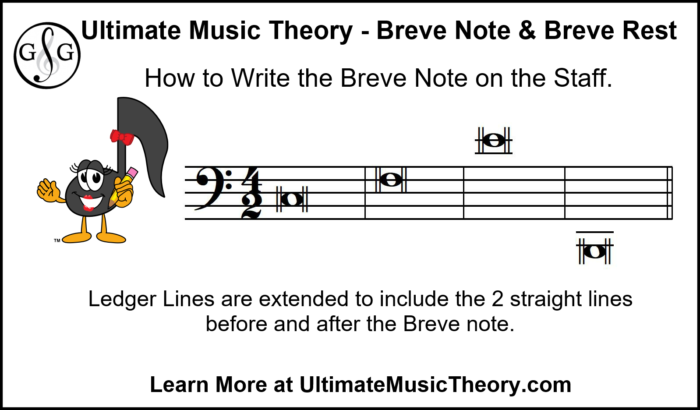
Breve Note, Breve Rest - How to draw a Breve Rest
A Breve Rest is a rectangle that is "filled in" (black or dark). It is written in Space #3 of the Staff.
Notice that a Breve Rest is just a Whole Rest standing up! In other words, the shape of a Whole Rest is a "Horizontal Rectangle" and the shape of a Breve Rest is a "Vertical Rectangle".
When writing on a Staff, do not write a any "extra" lines above or below the rest. Do not "darken" the line that the Whole Rest is hanging down from. It is simply a rectangle on the Staff.
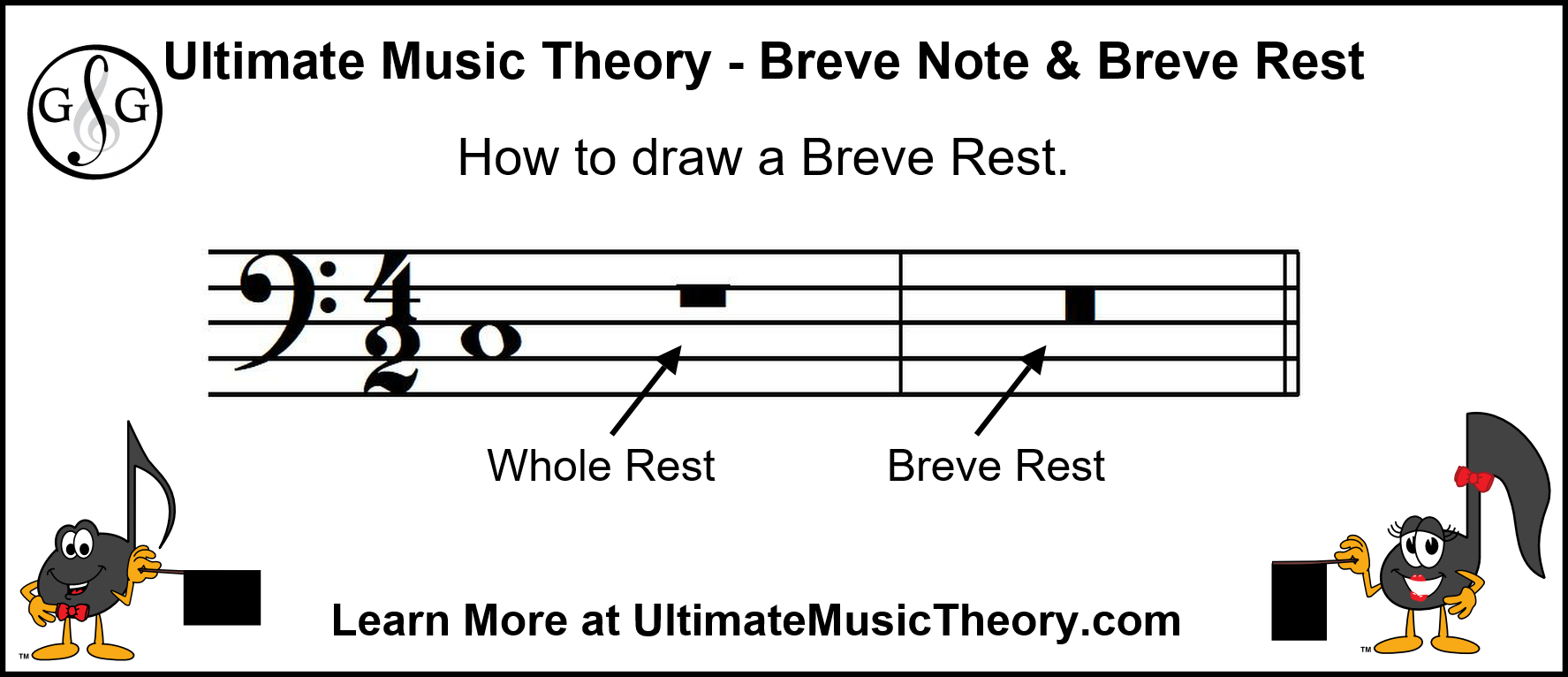
Breve Note, Breve Rest - When are They Used?
A Breve Rest is only used for a whole measure of silence in 4/2 time. (Sorry about having to write that like a fraction!)
In the Ultimate Music Theory Basic Rudiments Workbook on Page 102, we learn the "Whole Rest Rule":
A Whole Rest fills an entire measure of silence in ANY time signature. The Top Number indicates the number of beats given to the Whole Rest.
The exception to the rule is 4/2 time in which a Breve Rest fills the whole measure.
Similarly, a Breve Note is used to fill a whole measure of "sound" in 4/2 time! While a Breve Note is equal to 2 Whole Notes tied together, writing 2 Whole Notes tied together is discouraged! It is so much easier to write a Breve Note!
To finish off this blog, I would encourage you to explore the Ultimate Music Theory LEVEL 6 Supplemental Workbook.
This Workbook is specifically designed to add the RCM 2015 Theory Syllabus Concepts to the Intermediate Rudiments Workbook (preparing Students for the RCM Level 6 Theory Exam).
On Pages 8 & 9 in the UMT LEVEL 6 Supplemental Workbook, you will find the greatest charts showing Notes and Rest from around the world. While the names of the Notes and Rests may be different (based on your Language), the "values" are always the same!
Ultimate Music Teachers Membership
♪ LEARN ♪ PLAN ♪ TEACH ♪ GROW
The One & ONLY Ultimate Music Teachers Membership
To Become A UMT PRO!
Your Success Path Starts Here - Go To TeachUMT.com Today!
Keep on Learning... With a Smile and a Song!
Shelagh McKibbon-U'Ren
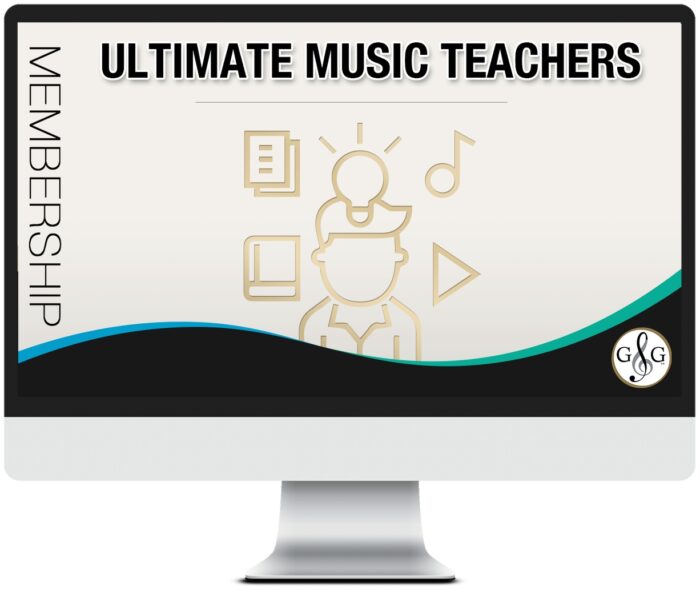


Thank you Shelagh! I liked the image of the coffee cup and the double-double!
Thanks Shelagh!
Good reminders. And fun ways to teach the students how to say “breve.”
Cynthia
Dear Shelagh,
Your pedagogy is so much fun and so informative. Thanks for your clear and simple explanation of another music theory concept that is difficult for some students.
Melrose